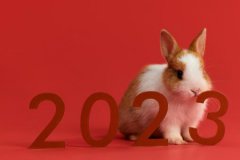|
As well as后面加动词形式是:既是介词,也是副词和连词,因此,该词组后面一般是跟一个并列的单词名词,形容词,副词等,同时,如果该词组前面是动词不定式,那么后面也应该是不定式,不过要省略to。 as well as后接动词用什么形式 as well as连接两个动词时,有四种情况: 1)前后两个动词的时态要一致.即:若第一个动词是一般现在时,第二个动词也应是一般现在时;若第一个动词是一般过去时,第二个动词也应是一般过去时. 例如: He publishes(published)as well as prints(printed)his own books. 他的书是自己印刷并出版的. 2)如果第一个动词是复合时态,或由can,may,must等加动词构成时,as well as后面可省去助动词或情态动词,此时,as well as意为“既……又……”. 例如: We are repairing the roof as well as painting the walls. 我们在粉刷墙壁,同时也在修理屋顶. She can /could sing as well as dance.她既会跳舞也会唱歌. 3)如果第一个动词是不定式,as well as后面的动词也要用不定式,但要去掉to. 例如: You can't expect her to do the housework as well as look after the children. 你不可能叫她既照管孩子又做家务. 4)as well as 用于句首,其后习惯上要接动名词 例如: As well as walking, he likes fishing and shooting. well的用法 一.用作形容词 1.好的 in a good state or position It is well that no one saw you. 没人看到你真好。 2.明智的 sensible; a good idea It would be well to start early. 早点开始的话是明智的。 3.健康的;痊愈的 in good health Please get well soon. 请尽快康复吧。 二.用作副词 1.良好地;正常地;令人满意地 in a good, right or acceptable way Well done! 做得好! 2.恰当地;合适地,可取地 The dress becomes you very well. 这件衣服你穿了很合适。 3.夸奖地,称赞地 satisfactorily with respect to conduct or action They speak well of him. 大家对他赞誉有加。 4.有理由地,恰当地 can / could / may / might ~ with good reason This theory lends itself well to our new data. 这个理论恰当地适用了我们的新数据。 5.很,相当 to a great extent or degree This variant is a very space-conservative idiom that is well suited for frequently used options. 这种变体是一种节省空间的习惯用法,很适合经常使用的选项。 三.用作名词 1.井,水井 [C] an issue of water from the earth : a pool fed by a spring We have a pump for drawing water from the well. 我们用一个水泵从井里抽水。 2.泉;源泉 [C] source, origin Life at the well became normal once again. 泉畔的生命又恢复常态。 四.用作动词 涌出,喷出;流出 Tears well in her eyes. 她的眼中涌出了泪水。 |







